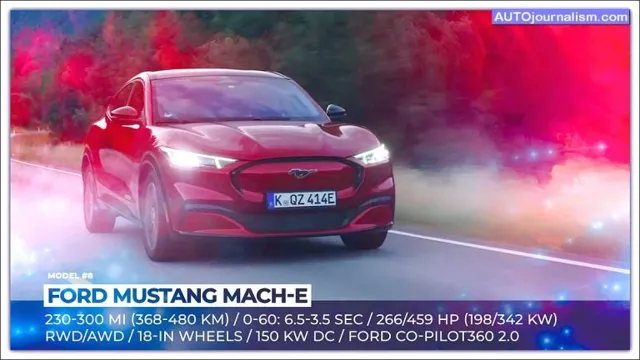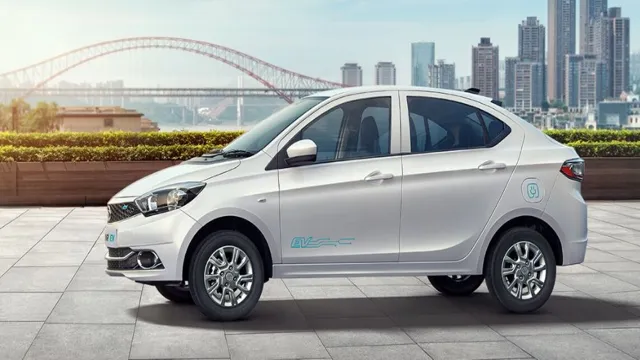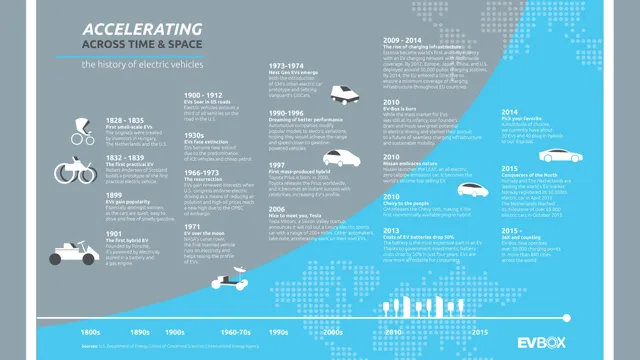From Early Beginnings to Modern Advancements: Uncovering the Fascinating History of Electric and Hybrid Cars with McFarland & Company
Electric and Hybrid Cars are the future of the automobile industry and they are changing the way we think about transportation. McFarland & Company’s book “Electric & Hybrid Cars: A History” provides valuable insight into the evolution of electric and hybrid cars over time. The book gives readers a thorough look at how these cars came to be, from the earliest electric cars in the 1800s to the latest high-tech models.
If you are curious about the history of electric and hybrid cars, then this book is definitely something you want to check out. The book is written in an engaging and easy-to-read style, packed with interesting details and facts. Not only does it provide a comprehensive look at the history of electric and hybrid cars, but it also delves into the technological advances that have allowed these cars to become more efficient, practical, and widely used.
As you read through the pages, you’ll get a sense of how electric and hybrid cars have evolved in response to social, economic, and environmental pressures. One thing that is clear from the book is that electric and hybrid cars are not just a fad. The trend towards cleaner and more sustainable vehicles is growing, and electric and hybrid cars are at the forefront of this movement.
With the ongoing developments in technology, we can expect to see even more impressive advancements in the years to come. Overall, “Electric & Hybrid Cars: A History” is a fascinating read that will leave you feeling knowledgeable about a subject that is rapidly changing the world we live in. Whether you are an auto enthusiast or just someone who wants to learn more about the history of electric and hybrid cars, this book is definitely worth checking out.
Introduction
Electric and hybrid cars have come a long way, and it all started with the desire to find a more energy-efficient and eco-friendly way of transportation. McFarland & Company has published a book that delves into the history of these types of cars, tracing their roots from the early 1800s to the present day. This book is a fascinating read that explores the technological advancements and groundbreaking innovations that have allowed electric and hybrid cars to evolve into the vehicles we know today.
It is interesting to note that electric cars were actually very popular in the late 1800s and were even outselling gasoline-powered vehicles for a time. However, advancements in gasoline-powered cars and the discovery of cheap oil put electric car development on hold until the 1990s. Today, electric and hybrid cars are becoming increasingly popular as society becomes more aware of the need for sustainable and eco-friendly transportation options.
From the early designs of electric vehicles to the modern-day Tesla, the history of electric and hybrid cars is a captivating tale, and one that continues to evolve with each passing year.
The Beginnings of Electric Cars
Electric cars have come a long way since their inception. The idea of an electric car dates back to the early 1800s when inventors began experimenting with battery-powered vehicles. However, it wasn’t until the late 1800s that practical electric cars were developed.
The first electric cars were simple and crude, with limited range and speed. But as technology improved, so did electric cars. In the early 1900s, electric cars were a popular alternative to gas-powered cars, especially for city driving.
But the invention of the electric starter motor for gas engines in 1912, which eliminated the need for hand-cranking, gave gas engines a significant advantage, and electric cars began to decline in popularity. It wasn’t until the 1990s that electric cars began to make a comeback. With advances in battery technology, electric cars have become a viable alternative to gas-powered cars, with longer ranges and faster speeds.
Today, electric cars are becoming increasingly popular, thanks to their environmental benefits, low operating costs, and impressive performance.
The Rise of Hybrid Technology
Hybrid technology is rapidly gaining popularity as a way to combat both rising gas prices and concerns about the environment. Combining a traditional gasoline engine with an electric motor, hybrid vehicles offer improved fuel efficiency and reduced emissions compared to their non-hybrid counterparts. With advancements in technology, hybrid cars no longer sacrifice performance for efficiency.
Instead, they offer a combination of power and fuel economy that make them a great option for those looking for a more eco-friendly driving experience. In addition, as more and more automakers incorporate hybrid technology into their vehicles, the cost of owning a hybrid has decreased, making it a more affordable option for consumers. Whether you’re looking to save money at the pump or reduce your carbon footprint, a hybrid vehicle may be the perfect choice for you.
Electric Cars Today
Electric and hybrid cars have come a long way since their inception. In fact, “Electric and Hybrid Cars: A History” by Curtis D. Anderson and Judy Anderson provides a comprehensive look at the evolution of these vehicles.
Initially, electric cars were popular in the late 19th century, but the rise of the gasoline engine saw their market share dwindle. However, with the push for sustainability and climate change action, electric and hybrid cars have been gaining popularity once again. The development of new technologies and the expansion of charging infrastructure have helped to increase the appeal of these vehicles.
As a result, there are numerous options available to consumers, ranging from affordable electric models to high-end luxury hybrids. The future of the automobile industry looks set to be increasingly electric, and it’s exciting to see what lies ahead.
Popular Electric Car Models
Electric cars have become more popular than ever in recent years, and it’s easy to see why. With advancements in technology and a growing concern for the environment, more people are opting for these eco-friendly vehicles. There are many popular electric car models available today, including the Tesla Model S, Nissan Leaf, and Chevy Bolt.
The Tesla Model S is one of the most well-known electric cars on the market and is easily recognizable by its sleek design and large touchscreen display. The Nissan Leaf is another popular choice, offering an affordable and practical option for those looking to make the switch to electric. The Chevy Bolt is a compact hatchback that boasts an impressive range of over 200 miles on a single charge.
Overall, electric cars offer a viable and sustainable alternative to traditional gas-powered vehicles, and with more models hitting the market each year, it’s never been a better time to make the switch.
Advantages and Disadvantages of Electric Cars
Electric cars are becoming more popular these days, and for good reason. They are more environmentally friendly than traditional gasoline-powered cars, as they produce fewer emissions. Additionally, the cost of maintenance is lower, and electricity can be cheaper than gasoline.
On the other hand, one of the biggest disadvantages of electric cars is their limited driving range, which can be a problem for long road trips. Furthermore, charging stations are not as widespread as gas stations, making it difficult to find a reliable charging location. Another disadvantage is the higher upfront cost of buying an electric car, which can turn some people off.
Despite these challenges, electric cars are an increasingly attractive option for those looking to reduce their carbon footprint and save on long-term expenses.
Charging Stations and Infrastructure
As electric cars gain popularity, the demand for charging stations and infrastructure continues to rise. It’s no surprise that one of the primary concerns electric car drivers have is range anxiety, or the fear of running out of power. Fortunately, there are now more and more charging stations popping up all over the world, making it easier than ever to charge your electric vehicle on the go.
While there are still some areas with limited charging options, the charging infrastructure is growing rapidly, and we can expect to see even more charging stations in the coming years. Just like how gas stations are to traditional cars, charging stations are crucial to the success of electric vehicles. Without them, electric cars would be much less practical and convenient to own.
In addition to public charging stations, many electric car owners also choose to install charging stations at their homes. This allows them to conveniently charge their car overnight, making sure it’s fully charged and ready to go in the morning. Overall, the growth of charging infrastructure is a critical step towards making electric cars more accessible and viable for a wider audience.
Future of Electric & Hybrid Cars
When we look at the history of electric and hybrid cars, we can see how they have evolved over the years. McFarland & Company even published a book exploring this topic, highlighting how electric and hybrid cars have been around for longer than we might think. While they didn’t gain much traction in the early days due to limitations in technology and infrastructure, recent advancements have made them an increasingly popular choice for car buyers.
With concerns about climate change and the depletion of finite resources, the use of electric and hybrid cars is becoming more important than ever. It’s clear that they have a bright future ahead of them, especially as the technology behind them continues to improve and become more affordable. With environmental benefits, improved fuel efficiency, and lower operating costs, electric and hybrid cars will play a major role in shaping the future of the automotive industry.
Technological Advancements
The future of electric and hybrid cars is bright, with technological advancements driving the industry forward. One of the most exciting developments is the push towards longer battery life, which will increase the range of these cars and make them a more viable option for longer trips. Additionally, advancements in charging technology will make it easier and quicker to charge these vehicles, reducing the time it takes to top up and get back on the road.
Another major trend is the integration of autonomous driving technology, which will make these vehicles safer and more convenient to use. Overall, the future of electric and hybrid cars looks promising, and with continued innovation and investment in R&D, we can expect to see even more exciting advancements in the years to come.
Government Policies and Incentives
The future of electric and hybrid cars is looking brighter than ever, thanks in part to government policies and incentives. Many countries around the world have implemented programs that encourage the adoption of these eco-friendly vehicles. In the United States, for example, buyers of electric cars can receive a federal tax credit of up to $7,500, making them more affordable than ever.
Additionally, some states offer their own incentives, such as rebates and reduced registration fees. This means that more and more people are able to make the switch to electric or hybrid cars without breaking the bank. And it’s not just individuals who are benefiting – governments are also using electric and hybrid cars for their own fleets, further demonstrating their commitment to sustainability.
As these policies and incentives become more widespread, we can expect to see continued growth in the electric and hybrid car market.
Conclusion
In conclusion, McFarland & Company’s book on electric and hybrid cars takes us on an electrifying ride through the history of these innovative vehicles. From their humble beginnings in the 19th century to today’s cutting-edge technological advancements, these cars have come a long way. With increasing concern for the environment and rising fuel costs, it’s no wonder that electric and hybrid cars are now gaining popularity.
McFarland & Company’s book is a must-read for anyone interested in the past, present, and future of this revolutionary mode of transportation. So, let’s get charged up and take a ride into the future with electric and hybrid cars!”
FAQs
What is the history of electric cars?
Electric cars have been around since the early 19th century but lost popularity to gasoline cars in the early 20th century. In recent years, however, electric cars have become more popular due to advancements in technology and concerns about environmental impact.
What is the difference between electric and hybrid cars?
Electric cars run solely on electricity and must be charged, while hybrid cars have both an electric motor and a gasoline engine that work together to power the vehicle.
Are electric cars more expensive than gasoline cars?
Initially, electric cars may have a higher purchase price than gasoline cars. However, over time, they can be more cost-effective due to lower maintenance and fuel costs.
What are the environmental benefits of electric and hybrid cars?
Electric and hybrid cars produce fewer emissions than gasoline cars, leading to improved air quality and reduced carbon footprint. Additionally, using renewable energy sources to charge electric cars can contribute to even further emissions reductions.







